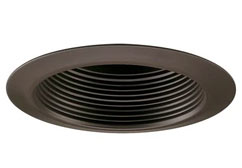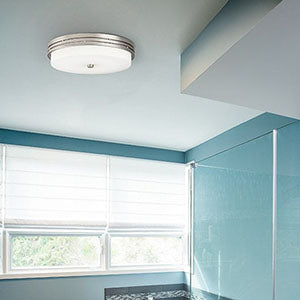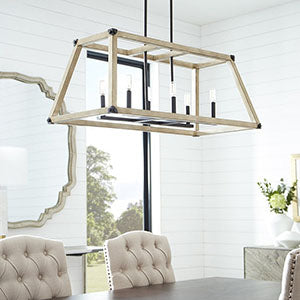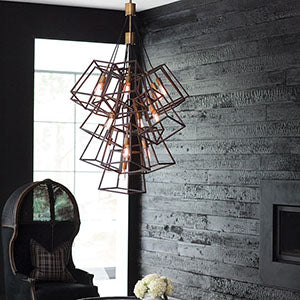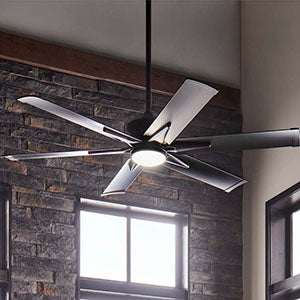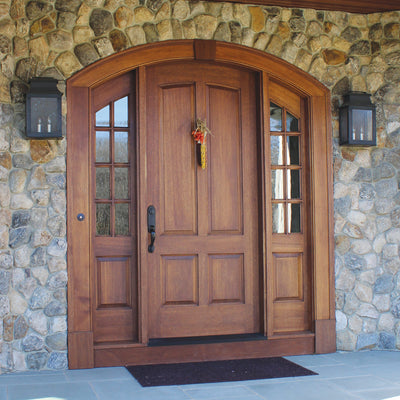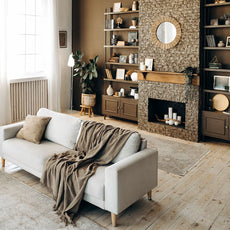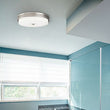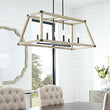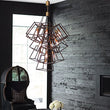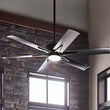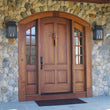Lighting
Recessed vs. Flush Mount Lighting: What’s the Right Choice for Your Home?

Choosing the right ceiling lighting can dramatically improve your home’s function and style. In this guide, we break down the key differences between recessed lighting and flush mount lighting, including their pros, cons, and ideal applications—plus expert tips on how to use both in your lighting plan.
What Is Recessed Lighting?
Recessed lighting, also called can lights or downlights, is installed into a hollow opening in the ceiling. Only the trim and bulb are visible, creating a clean, streamlined look.
- Baffle trim: Reduces glare with ridged interior
- Reflector trim: Maximizes brightness
- Eyeball/gimbal trim: Adjustable directional lighting
- Shower trim: Moisture-resistant, ideal for bathrooms
Pros of Recessed Lighting
- Low-profile design—ideal for low ceilings
- Delivers ambient, task, or accent lighting
- Modern and minimalist aesthetic
- Available in wet-rated options for bathrooms and outdoors
Cons of Recessed Lighting
- Requires ceiling cutouts and wiring access
- May need multiple fixtures for even illumination
- Limited decorative impact

What Is Flush Mount Lighting?
Flush mount lighting sits directly against the ceiling surface, offering broad overhead illumination. Semi-flush mount lights extend slightly below the ceiling, providing a decorative middle ground between flush mounts and hanging fixtures.
Pros of Flush Mount Lighting
- Offers a wide range of decorative styles and finishes
- Perfect for ambient lighting in bedrooms, hallways, and living areas
- Simple, one-hole installation
- Great for rooms with standard-height ceilings
Cons of Flush Mount Lighting
- Can create shadows in larger rooms without layered lighting
- Limited to ambient light—less suited for task lighting
- May require cleaning if designs include open glass or fabric
Best Rooms for Recessed & Flush Mount Lighting
| Room | Recommended Lighting |
|---|---|
| Bathroom | Recessed (wet-rated) + flush over vanity |
| Kitchen | Recessed for task areas + flush mount for general lighting |
| Hallways | Flush or semi-flush mount fixtures |
| Bedrooms | Flush or recessed lighting with added bedside lamps |
| Living Room | Layered recessed + statement semi-flush fixtures |
| Covered Outdoor Spaces | Wet-rated recessed or flush mount lights |
When to Combine Recessed and Flush Mount Lighting
For the most effective and stylish lighting layout, consider combining both types of lighting in a layered design:
- Ambient lighting: Recessed or flush fixtures for general light
- Decorative lighting: Flush or semi-flush mount lights for style and character
- Task lighting: Add pendants, sconces, or track lights for focused illumination
Installation & Safety Tips
- Use IC-rated recessed housings for insulated ceilings
- Select wet-rated or damp-rated fixtures for bathrooms and outdoor areas
- Install dimmers or zone lighting for more control
Final Thoughts
Whether you’re upgrading your kitchen, designing a spa-like bathroom, or refreshing your entryway, understanding the difference between recessed lighting and flush mount lighting will help you make confident, stylish decisions. For optimal results, mix and match both types to create balanced, layered lighting throughout your home.
Explore all ceiling lighting options at Riverbend Home and find the perfect fixture for every room.

